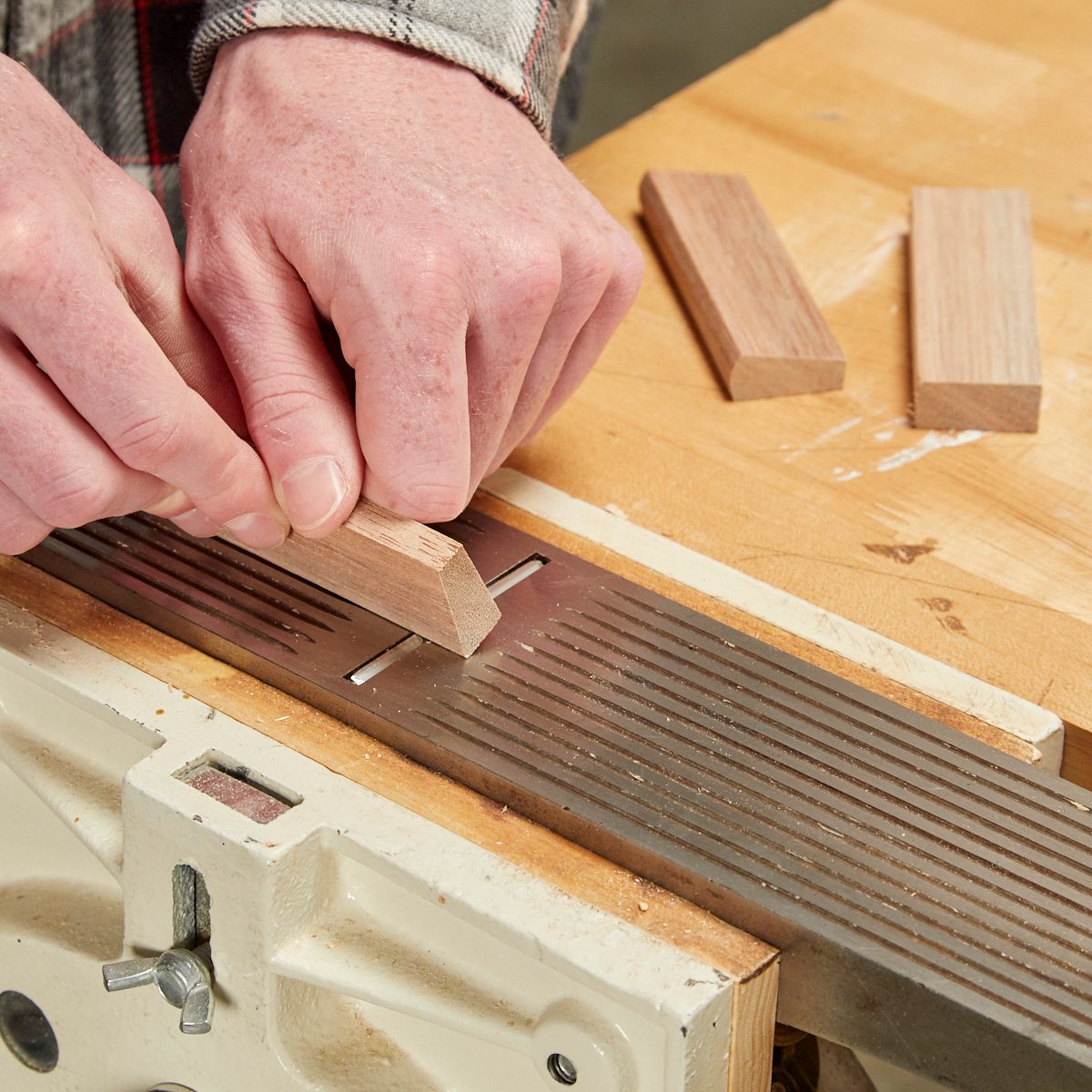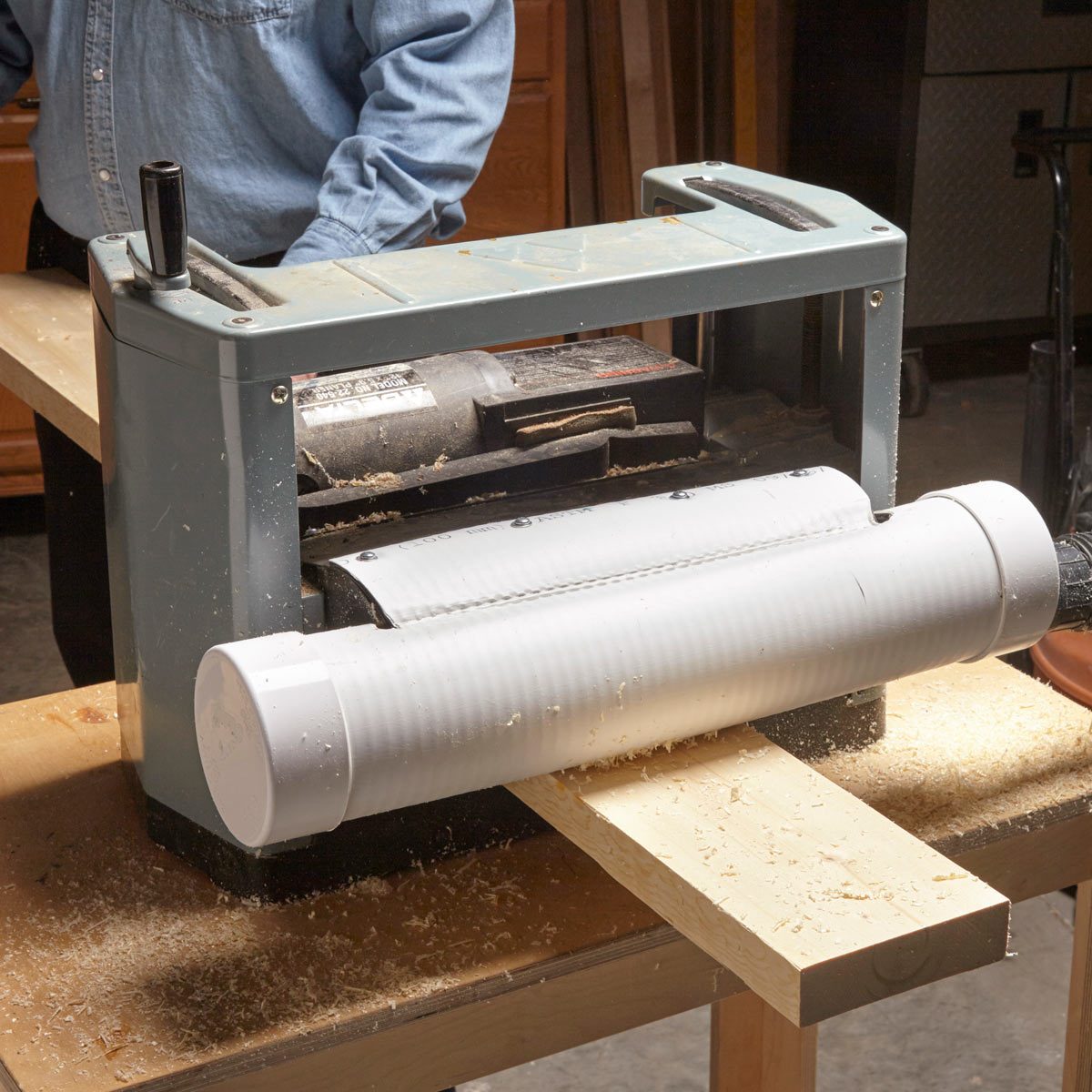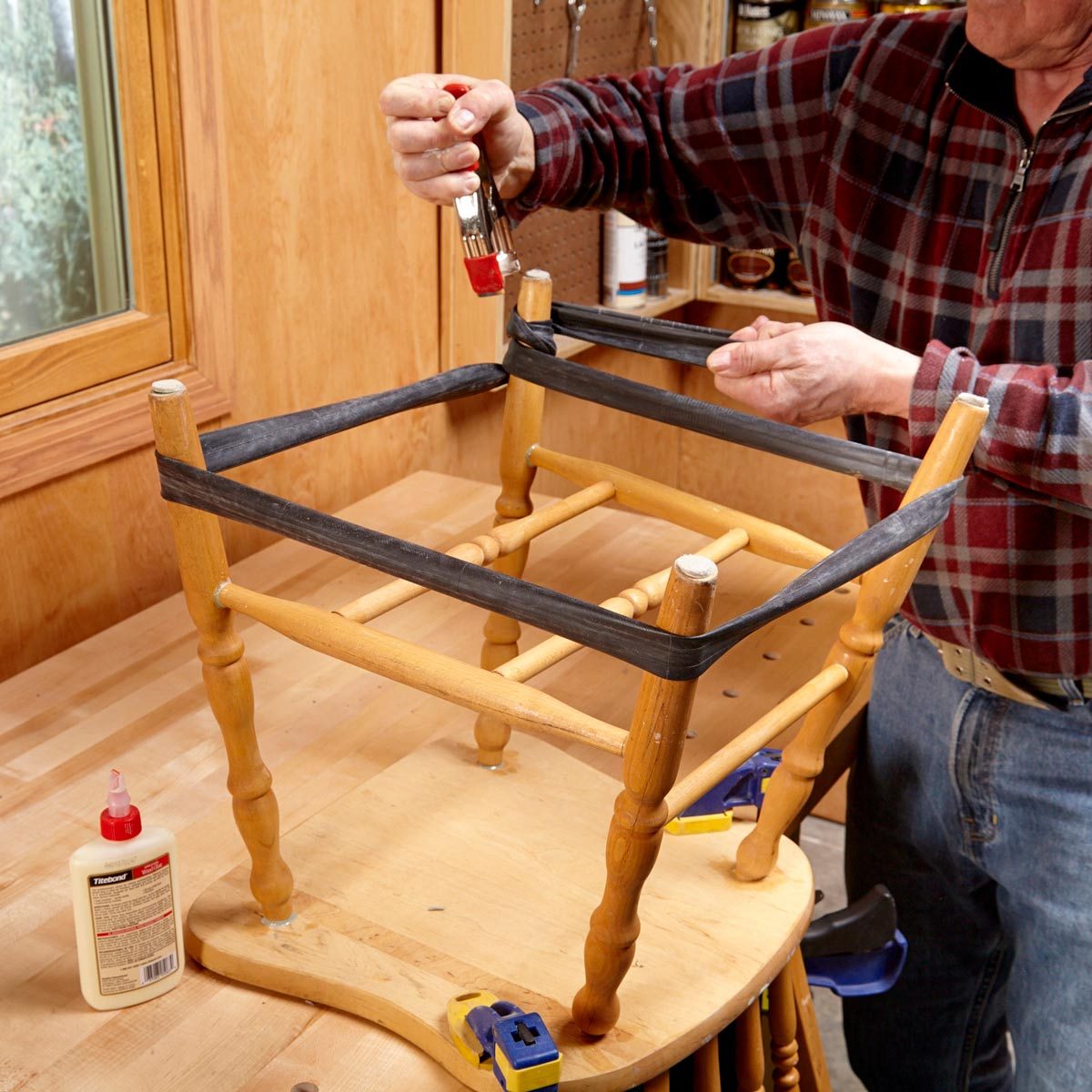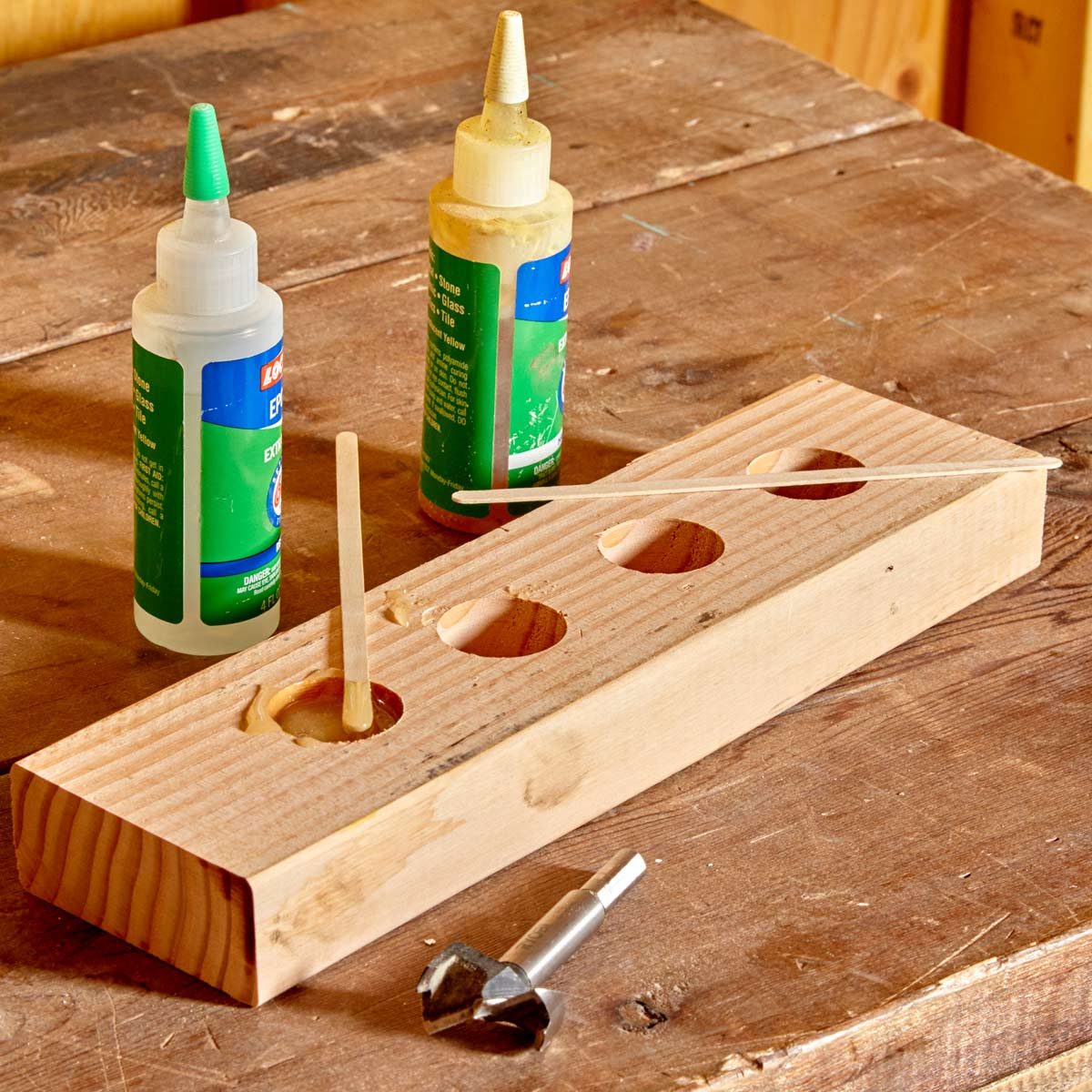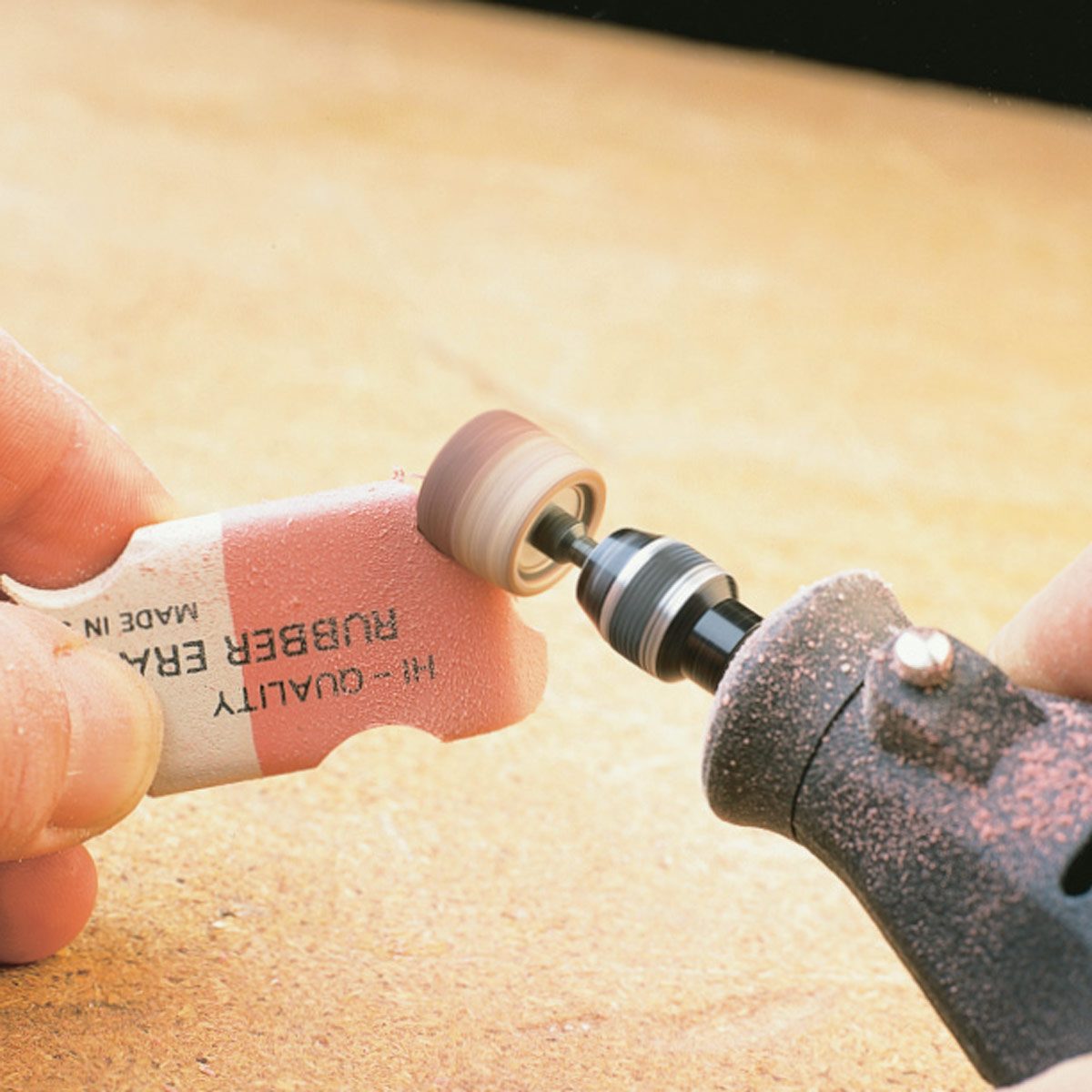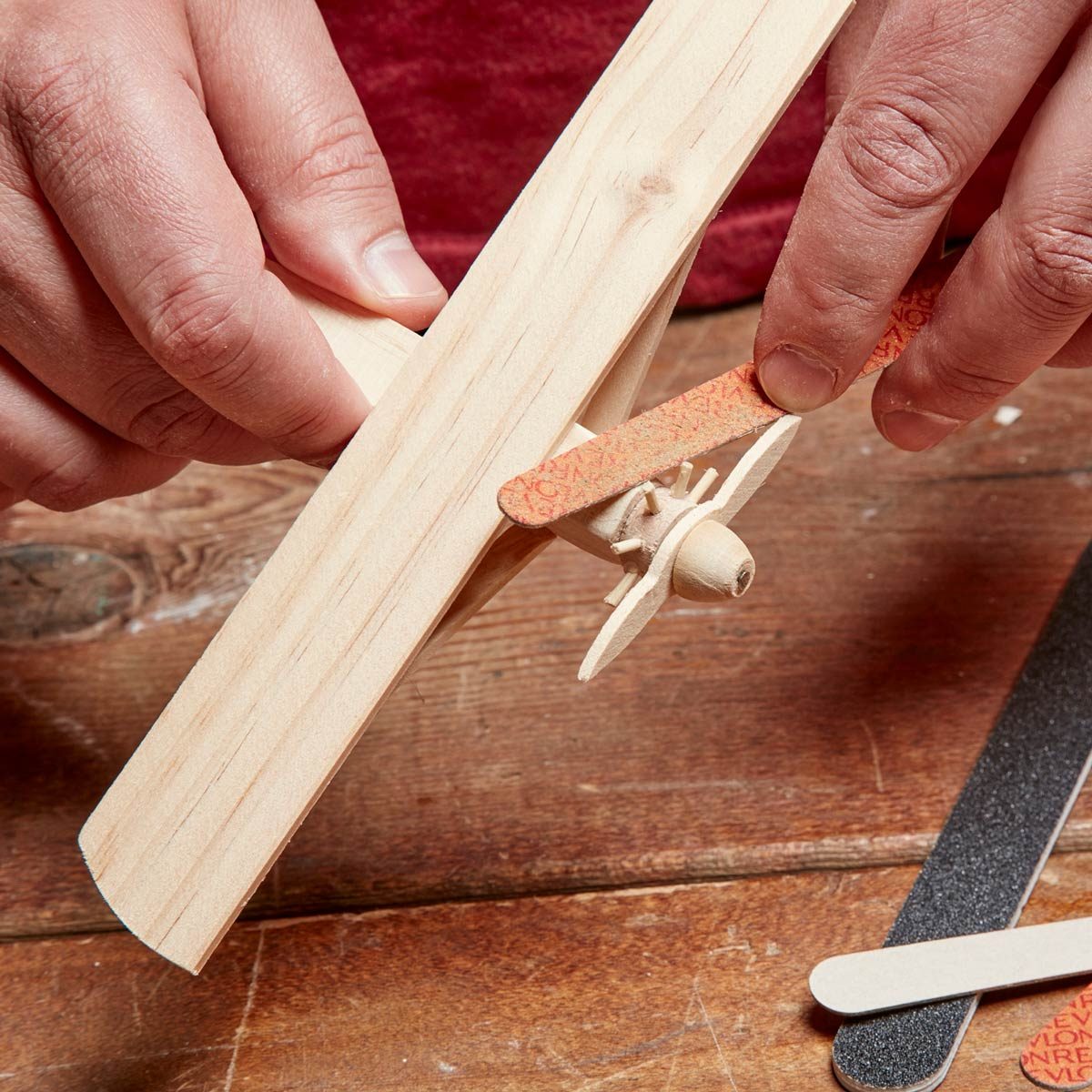Make your own table saw fence

This self-clamping table saw fence takes only seconds to put on and lets you crank the blade into the fence to create both angled cuts along board edges and extremely thin rip or rabbet cuts. With a hand- or jigsaw, cut pieces from a 1×4, making the inside width of the “L” a hair under the thickness of your saw’s fence. Drill 8mm holes in the L-blocks and plywood fence and join them with two 6 x 76mm countersunk machine screws, washers and Wing-Nuts. As always, use extra caution when you’re sawing without a blade guard. Our thanks for this new sawing angle to professional furniture maker George Vondriska
Discover the 10 most common woodworking mistakes beginners make.
Brilliant mitre saw stop

I use binder clips for a lot of things around the shop, and here’s one that I thought I’d share. When I need to make multiple cuts all the same length, I just clamp my jumbo binder clip to my fence and use a 6mm-thick wood scrap pinched in the clip as a stop. Works like a charm! When it’s not in use, I clamp it to the cord so it’s always nearby. — John Muchow
Shelf bracket to the rescue

Brace skinny material on edge with this slick system. Clamp a shelf bracket to a workbench, stand the material on edge and then clamp it to the bracket. The clamp will hold the material, keeping your hands free for other operations. — Azha Jensen


